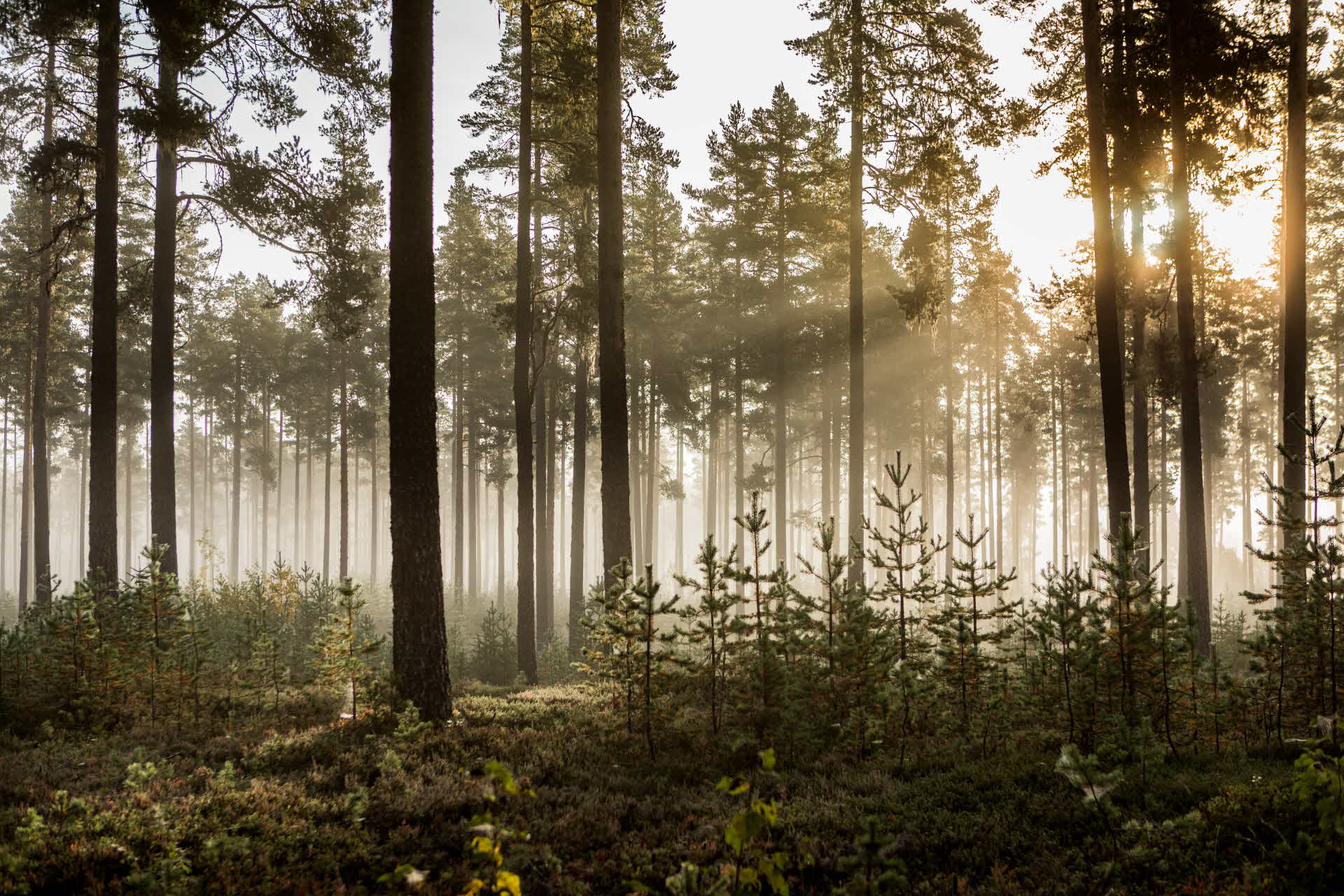
The dual positive climate effect of forests
- News
- Forest
- Sustainability
Forests sequester large amounts of carbon dioxide as they grow. However, they also have considerable climate impact when they are felled because products produced using wood form forests replace fossil-based products so that oil and coal can be left in the ground. “We must consider both these parameters to be able to make political decisions that have the greatest positive impacts on the climate. There is a holistic calculation model that helps do just that,” says Peter Holmgren, an expert on forestry and climate.
The UN Framework Convention on Climate Change states that saving the climate rests on a two-pronged approach of reducing fossil emissions and increasing carbon storage.
“The forestry industry contributes to both of these approaches, but at EU level there tends to be more focus on carbon storage in forests. The contribution forests make to reducing fossil emissions is overlooked, even though this is actually how the forestry sector provides the greatest benefit. When you use forests as a raw material to build houses and manufacture packaging and biofuels, for example, this replaces products made from cement and plastic that have a negative impact on the climate,” explains Peter.
Preventing emissions
The effect of renewable alternatives such as forestry raw materials reducing the need for fossil products is known as substitution. Substitution prevents the release of substantial amounts of fossil carbon dioxide into the atmosphere.
“Substitution is a fairly complicated process because emissions reductions take place in industries other than forestry and often in other countries. However, it is incredibly important to include substitution effects because otherwise we’ll end up with policies that impact the climate negatively,” Peter notes.
Together with SCA, Peter has developed a model that indicates the forestry sector’s overall climate impact. The model reveals the extraordinary opportunities that the sector offers when it comes to contributing to climate initiatives. The model consists of three components:
Change in the carbon stock in forests and wood-based products
Growing forests sequester carbon. Active forest management increases the volume of timber over time and this means that carbon stocks in forests grow every year, so-called carbon sinks. In addition, carbon is sequestered in products made from raw materials made from forests.
+
The Substitution Effect
Emissions of fossil-based greenhouse gases are reduced due to the use of wood-based products and bioenergy instead of less climate-friendly alternatives.
-
Fossil emissions in the forestry sector’s value change
The forestry industry’s own fossil emissions from forestry, industrial processes and transport are deducted from the climate benefits that the industry creates.
= Total climate benefit
A recent report based on this model shows that the Swedish forestry industry creates a climate benefit that is twice as large as Sweden’s total climate emissions.
“Roughly half of this climate benefit is due to wood replacing products such as concrete, plastic and oil. And this is something that can be done over and over again, so it has an incredible impact. So, it’s clear that forest products are needed for us to be able to limit global warming,” says Peter.
EU focuses on carbon storage
But within the EU, focus is mainly on the first component of the model, that forests are important because they sequester carbon. The European Commission therefore wants more forests to remain untouched to increase carbon stocks. This is seen as compensating for other industries continuing to emit fossil carbon.
“However, forests are at their most useful if both of these functions – being carbon sinks and being used sustainably – are used so that they contribute to the substitution effect. If we stop using forests and do not have the ability to make products made from wood from forests, what should we use to build houses, manufacture packaging, fuel and everything else that is needed in a welfare society?
The answer is that we would need to use more other materials, which have a negative impact on the climate. We thus get an increase in carbon storage in forests, but at the same time, emissions of fossil carbon from other activities increase,” explains Peter.
Considerable growth of cultivated forests
Peter argues that forests can easily contribute with carbon sequestration and climate-smart products, just as they do today. An international study shows that it is precisely because forests are actively used that they sequester so much carbon. On the one hand, growth will be considerable in a cultivated forest, and on the other, there will be less damage and forest fires that contribute to high carbon dioxide emissions.
“Timber stocks are constantly increasing in Sweden’s forests and in the rest of Europe, so carbon storage is increasing at the same time as we have access to large quantities of sustainable raw materials. In fact, there is no country in the EU that fells more trees at a faster rate than its forests grow.”
Overall picture provides optimal benefit
Peter developed the climate model together with SCA 2018. Today it is used by several Swedish forestry companies and by the Swedish Forest Industries Federation. It is also beginning to attract interest abroad.
The model is an important tool for helping politicians make decisions that optimise climate benefits.
“It’s imperative that politicians and others involved in the forestry debate look at the whole picture. Then it becomes clear how forests can contribute in the best way.”
Footnote: Peter Holmgren was previously head of the global climate efforts at the UN Food and Agriculture Organization and is today an advisor in sustainable development.
Photo: Michael Engman